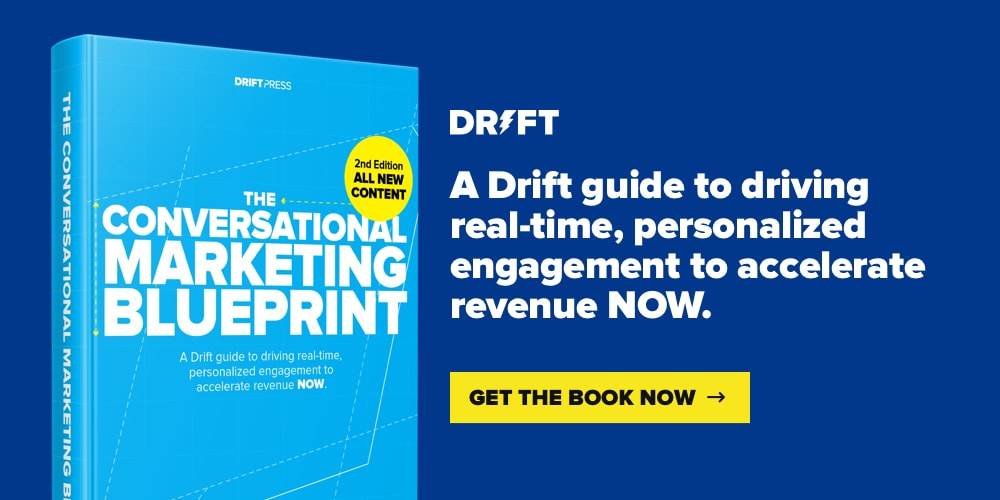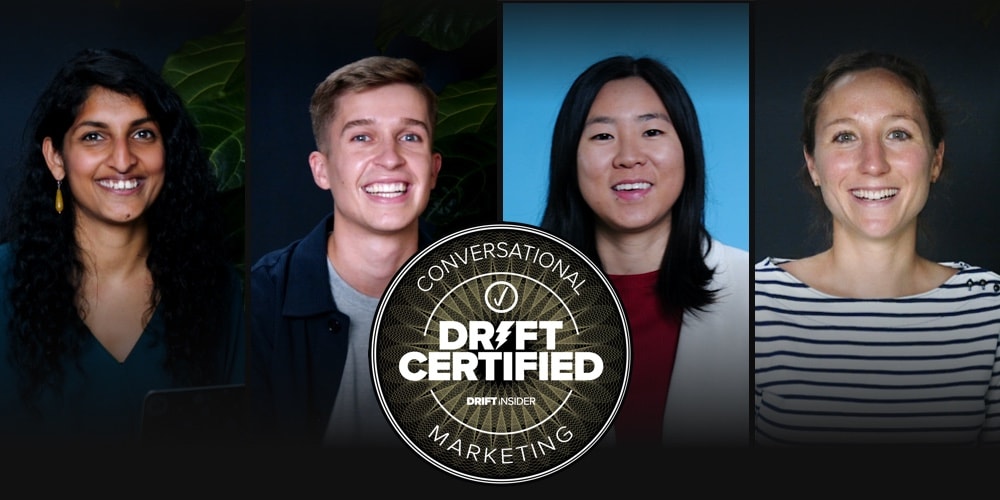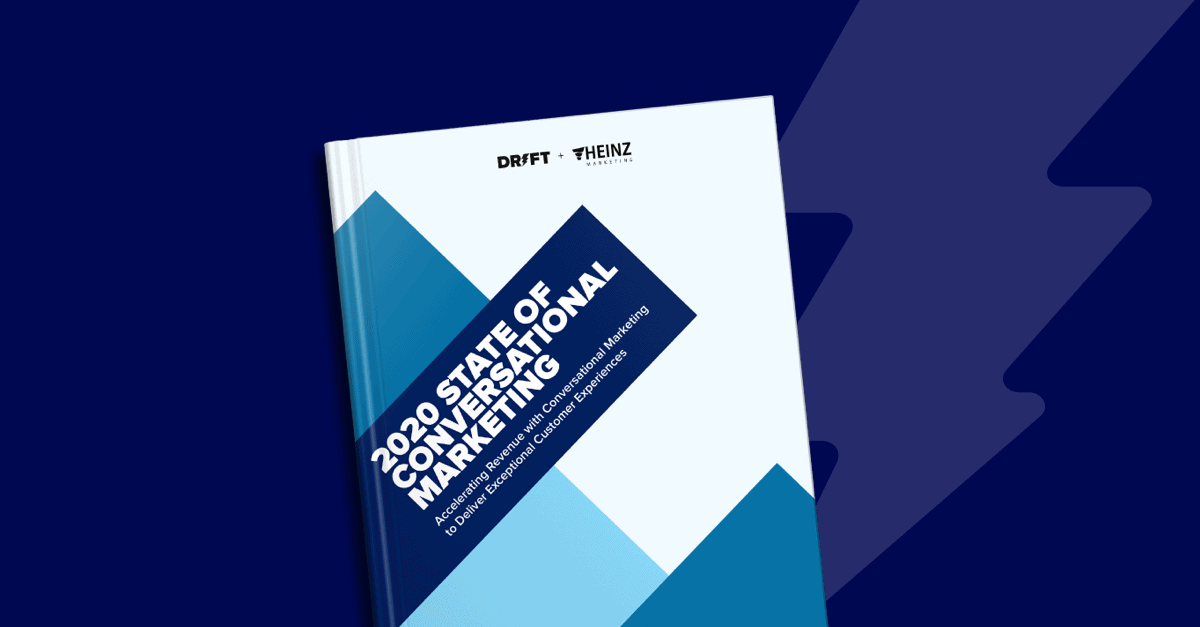
Finding a job wasn’t always easy, even before the world turned upside-down. Now, with U.S. unemployment levels reaching 16.3 million and every home pulling triple duty as a house/office/school, more people than ever are looking for work at companies that will support them.
Recruiters today have an opportunity to help more than ever before.
We hear a lot from folks that Conversational Marketing “isn’t for them, because they’re not a marketer.”
Guess what, recruiters? Conversational Marketing is for you, too.
Imagine the person visiting your job board right now. They’re overwhelmed, stressed, and worried about sending out the millionth application. What if you could send them a friendly message at that exact moment, saying, “Hey, need help finding a job?”
You can offer a personalized experience at scale for potential candidates as they search for roles on your site. Once they say, “Yes,” you can immediately vet them for open roles (or ones not yet open) and determine if they’re a fit – before ever hopping on a call.
Welcome to the new world of recruiting 🌏
Create a Modern Recruiting Strategy with Conversational Marketing
“So, I should just add a chatbot to my careers page?”
Well – yes. But we’ll get to that. Chatbots and live chat? They’re not a strategy. They’re tools. Throwing a chatbot onto your careers page can work, but without the strategy behind it, it’s like hammering at the ground, hoping a house will be built. The hammer is a tool, but you need a strategy before you can use it effectively.
Before you apply our Conversational Framework to your own recruiting efforts, consider your strategy.
Why are you recruiting candidates in the first place?
To grow your business 🤓
Top-line growth is directly correlated to your hiring goals. You need to know the who behind the hire before you can start executing on the what. Will you scale from a technology side, hiring more engineers? Or ramp up the sales team to get the word out? How many people are you looking to hire? Choose your top priorities so you know where to start with your conversational hiring model.
Then, if you haven’t already, you need to make your philosophy clear on remote work. Candidates were already looking for flexible options, but now? You need clarity.
The same goes for your company culture, remote or not. Take our leadership principles for example 👇

Getting close to customers is at the heart of everything we do, so every hire needs to value that, too. But we know it takes more than just words – it requires leadership, action, and a willingness to let this customer-centric philosophy guide your decision-making every single day.
At Drift, we know that this kind of rigorous application of our beliefs will help us achieve our ultimate vision: become the new way businesses buy from businesses. That’s why we made our leadership principles public – every candidate should know exactly where we stand before having a conversation with us.
That’s where the Conversational Marketing part comes in:
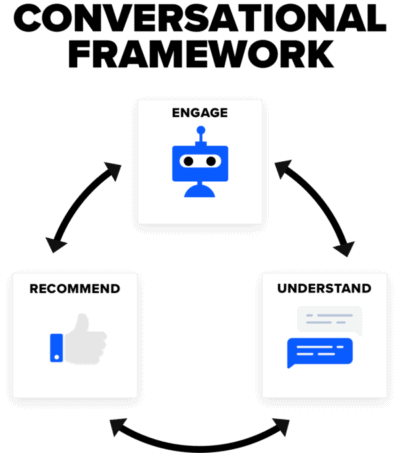
When it comes to your recruiting efforts, Conversational Marketing has three parts:
- Engage: We talk all the time at Drift about human-to-human marketing, rather than business-to-business or business-to-consumer. As a recruiter, you need to engage with candidates in a real-time, human-centric way.
- Understand: Who are you looking to attract to your company? What do they care about? Are they typically passive or active job seekers? Understanding your audience is the key to directing them to the right place.
- Recommend: Move highly qualified candidates forward through the process, or nurture passive job seekers until they’re ready to join the team.
Now grab your favorite marketing buddy and put that strategy in action:
9 Conversational Marketing Tactics for Recruiters
Strip away titles and you’ll see that the job of the recruiter is actually very similar to a role in sales. You’re selling something – a job opportunity, a company. That requires great marketing and sales skills, not just recruiting-specific skills. We’ve used these tried-and-true tactics for marketing, so why not for recruiting?
1. Use content to create an employer brand
Ultimately, your brand goes two ways: For your customers and for your employees. Conversational Marketing is just as much about building your brand and creating demand for your company hires as it is about moving candidates from interview to offer.
You can’t forget about the internal side of content marketing.
That means engaging with reviews on sites like Glassdoor, showcasing employee experiences on the blog, and sending out internal newsletters or messages for referrals.
What’s it like to work at your company? Give your candidates an inside look:
It’s about all of these different things that a potential candidate might use as a way to gauge, “Should I apply? Should I accept the offer? Should I keep going down the path of interviewing?”
2. Build empathy into your website
The conversation with a candidate doesn’t start the first time you pick up a phone.
It starts the first time they interact with your brand.
That may be on social media, but more likely, they engage in-depth with your website first. Stop what you’re doing right now and click over to your website. What do your most important pages for recruiting look like? (I mean it – take a look right this second. I’ll be here waiting for you!)
Ok, how do they look?
Yeah…I thought so.
Building empathy into every web page can be challenging. Often, career sites get deprioritized, or they’re managed through a separate tool, or there isn’t a unifying aspect to them.
One of the most important Conversational Marketing tactics is to make your career pages just as engaging and easy to navigate as the rest of your website so it decreases friction in the hiring process.
Take a peek at how a few of our customers do it 👀
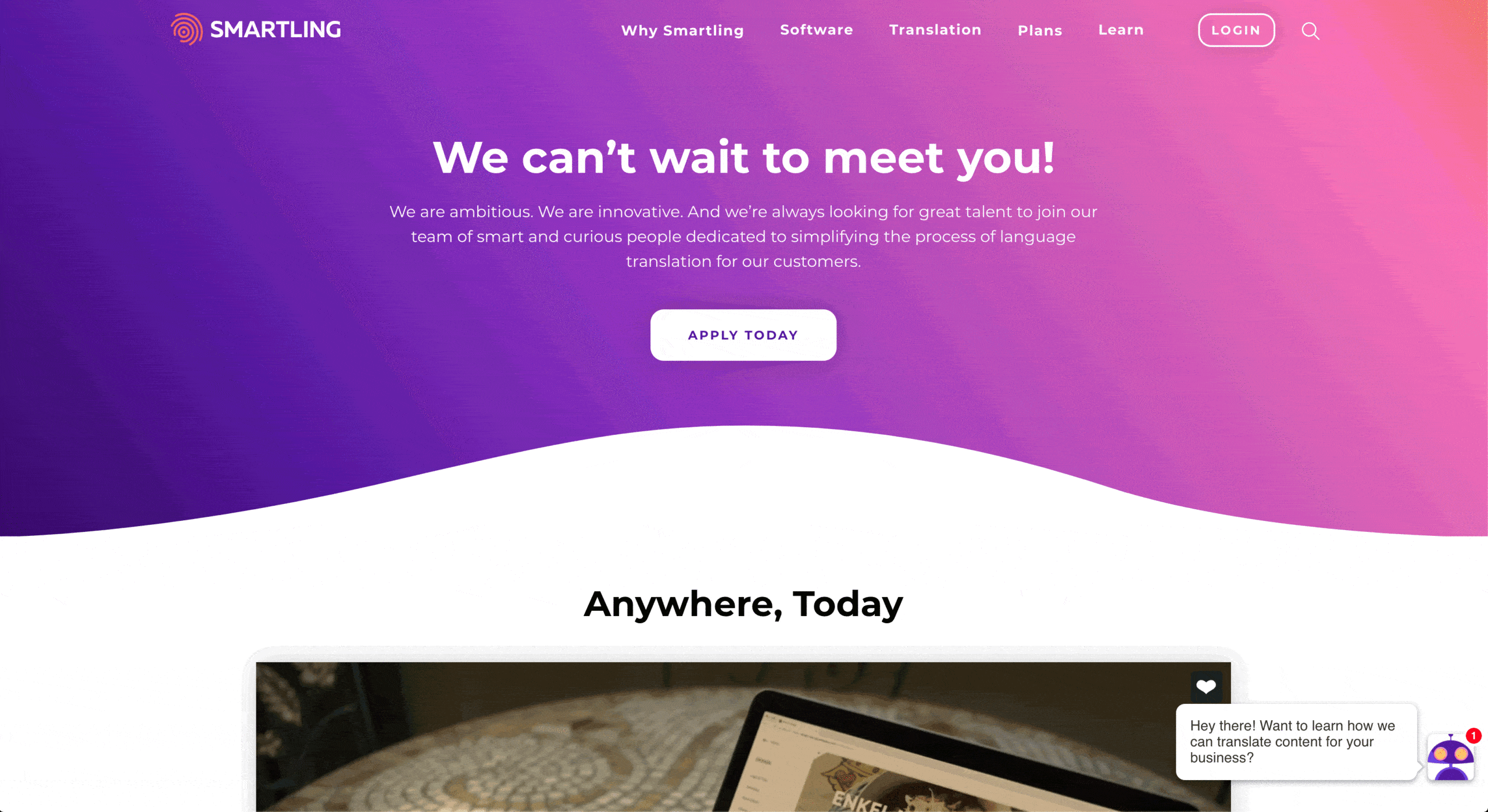
3. Add chatbots to career and recruiting pages
Let’s dial in on the most important web pages for recruiters: Your career and recruiting pages.
Make it easier for your customers to have a conversation with you by adding a chatbot. Our customers often see 30%-40% engagement rates on their pages with chatbots.
Do the math on that. How often do you get that kind of engagement with job seekers in real-time?
Let’s say someone was browsing your site on your open job positions page. They may be trying to find a specific department or location, and they’re just scrolling and scrolling.
So you say, “Need help?”
They type back, “Yes. I have a few questions about the company.” Answering those questions not only makes the process easier for them (by say, giving them the right name to address a cover letter to), but also gives you data about what they’re looking for and whether or not they’re a good fit.
4. Answer candidate questions
Once you get that first engagement, you already know so much more about the candidate. With Drift, you’ll also get a notification next time that person drops by your website, either on your career page or elsewhere.
Once you get that notification, you can engage them again. It’s another touchpoint to move them further down the funnel toward an application or an interview.
Candidates have tons of questions, especially with so much uncertainty in the world today. They probably want to know:
- Whether you’re remote-friendly
- What the compensation structure looks like
- How many direct reports they may have
- What kind of cross-functional work they’re doing
- Who to talk to to learn more
Answering those questions upfront isn’t nice-to-have. If 30% of the people visiting your careers page want to engage with you, you should be there for them. And yes – I’m guessing you already have 90% of this information spelled out in your job description. But giving these answers to candidates in chat is yet another way to engage with them on their terms.
Side note – the goal of Conversational Marketing isn’t to completely replace external and outbound recruiting. Instead, use it as another powerful channel to connect with qualified candidates. Because there are probably close to perfect fit candidates visiting your website right now. And you’re missing out on those email addresses, phone numbers, and conversational experiences that can differentiate your company from your competitor. Conversational Marketing can help with that.
Let’s return to this candidate example. You already know they’re interested in joining your company, because that’s what they told you last time they came to the site. Now is your chance to personalize that experience, give them the information they need to put together a kickass application, and find out a little more about them.
For example, if it’s their third time on the careers page and they haven’t applied, why? Ask, and you’ll find out they’re looking for a customer support position, and you don’t have any open.
You can get their resume or contact info right there and reach out to them when a position opens up.
It’s that easy.
5. Create passive and active conversational flows
Recognize who on your site is passive and who is active.
It’s tempting to throw them both into the same marketing flows, when they couldn’t have different attitudes about finding a job.
The active job seeker wants to work at your company tomorrow. They’re going to engage with you, and they’re going to apply.
The passive job seeker is poking around, thinking about their next move, but isn’t sure yet.
In marketing, we’d never talk to those two types of potential customers the same way. So you shouldn’t either.
One way to better target your passive job seekers is with personalization. Each time a candidate comes to your website, you can set a message that automatically says, “Hey so-and-so, welcome back.”
This triggers a notification to the recruiter to send them an email or reach out via LinkedIn, getting the ball rolling.
6. Make it human with video
Recruiters don’t use video enough.
Whether or not I was looking for a role right now, if a recruiter sent me a personalized video in my LinkedIn inbox, with the opportunity to chat with them in real-time, I’d absolutely say yes to that meeting.
It changes the whole experience.
Let’s say a position opens up in customer support, and that candidate you’ve been tracking is the perfect fit. Sending them a video message to re-introduce yourself adds a personal touch that beats any generic email or LinkedIn message. Taking this approach will prove extremely valuable when you’re recruiting for higher-level and hard to fill positions (like sales, product, and engineering).
You don’t have to think too hard about it. Record yourself, 1-3 minutes, telling them who you are and what the role entails, the same way you would in the first part of any video call.
And on the flip side, video is a fantastic way for candidates to differentiate themselves and get noticed by recruiters and hiring managers.
So whether you’re hiring for a role or looking to make the next move in your career, video should be part of your strategy.
(Did I mention it’s part of our Platform? Check out Drift Video here ?)
7. Connect candidates to potential colleagues
One aspect of recruiting that’s so under-utilized is networking. Finding a new job isn’t just taking on a new set of responsibilities – it’s joining a team of people that you work with day in and day out.
You may already have several ambassadors embedded in your various departments that are open to helping with recruiting, or talking to candidates interested in what the day-to-day looks like outside of the interview process.
In Drift, we offer a meeting feature that allows you to schedule time with someone on their calendar via chatbot. You could do the same thing for these ambassadors, showing the schedule of the person who makes the most sense based on the candidate.
Or, you can serve up a quick 30-second or 60-second video from the person who’s doing that job today to educate that candidate on the website, directly within the chatbot.
8. Create a VIP path for highly qualified candidates
Not everyone who comes to apply to your site will be a fit, but for those that are, you’ll want to roll out the red carpet.
That means personalizing the experience, serving up recommendations for open positions, but also using that engagement to give them more information. If you have someone coming to the site that’s in the applicant pool, and it’s a candidate you’re excited about, why not trigger a personalized message to them the next time they come to the website?
That can be as simple as saying, “Hey, did you hear we’re rated as a Best Places to Work for engineers?” to an engineering candidate.
Making the hiring experience as personal as possible makes it easier for the candidate to say, “Yes. This is the company for me.”
9. Send automatic follow-ups
Like most sales cycles, successful recruiting is all about the follow up. Once they come to the site, are they interested enough to apply? Do they still have questions?
After someone leaves your site, trigger a follow-up of that conversation to the candidate, or to notify you to send a more personalized follow-up to continue the conversation on another channel.
Recruit Like a Marketer
The best way to become a modern recruiter? Think like a marketer.
Conversational Marketing – engage, understand, recommend – lets you engage with your candidates on a more personal level.
You’re selling your brand, and your open roles, but you’re also looking for people to join your team. Why not get to know your future coworkers sooner than later?
Start the conversation now.




